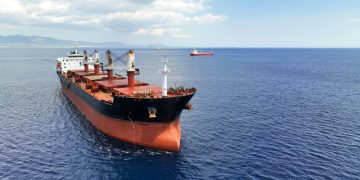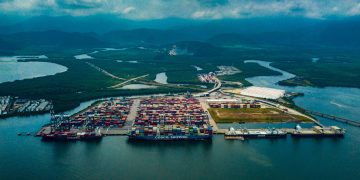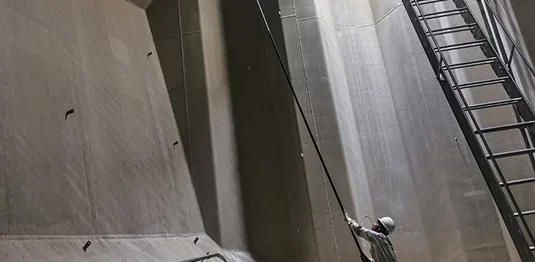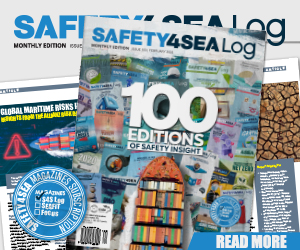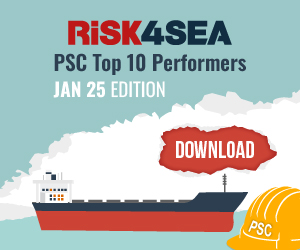West P&I Club has issued a Loss Prevention Bulletin about best practices and guidelines on cargo tank cleaning and preparation onboard tankers.
West P&I highlights that product and chemical tankers carry a variety of commodities, often necessitating frequent tank cleaning to prevent a cross-subsequent off-spec claim. Detailed planning of the tank cleaning is crucial, and the ship’s crew must be informed of the schedule.
The extent of cleaning required depends on the properties of the previous cargo, the tank coating, the next cargo’s preloading specifications and the shipper’s requirements.
Why is tank cleaning necessary?
Tank cleaning is essential in the following circumstances:
- Preparing for the next cargo
- Dry dock
- Regulatory Compliance: adhering to MARPOL and other IMO Conventions/Codes
- Preventing build-up of residues e.g. in Residue Oil Tank (ROT) / Slop Tanks
- Facilitating gas freeing for tank inspection / mopping / maintenance / repairs
- Complying with the charter party agreement
- In extreme circumstances to prepare for carrying clean ballast
Tank preparation encompasses various stages, with tank cleaning being the most common. The preparation steps vary depending on the type of vessel and cargoes.
These steps include:
Planning
Effective tank cleaning requires careful planning, considering cargo details, environmental factors, and system components. The plan should address cleaning methods, risks, and safety measures. Regular risk assessments are needed, especially for new or infrequent cargos. Fire and explosion risks are minimized by washing tanks in an inert atmosphere.
Bottom flush
A line and bottom flush is the first cleaning step required for all non-inert tanks as per ISGOTT.
Tank cleaning
Tank washing mediums include cold seawater wash, hot seawater wash, freshwater wash, freshwater rinse, deionised wash/rinse, treated water wash/rinse (e.g., reduce hardness), and chemical or detergent wash. Tank washing methods include butterworthing, injecting, re-circulating, rinsing, steaming, purging, inerting, gas freeing, local cleaning, stripping and mopping and drying.
Verifying results
Verification of the tanks’ level of cleanliness is more often required before the charterer’s permission to load the next cargo. This can be done through enclosed space entry for a visual inspection and coating assessment, which may include wall wash testing, or by wash water analysis, eliminating the need for enclosed space entry.
Pre-wash after discharge
Prewash must be carried out for chemical tankers as per MARPOL Annex II.
Decanting & discharging ashore
Slop tanks must be decanted as per the relevant MARPOL Annex. The ROT must be discharged ashore in a timely manner.
Safety concerns:
- Entry into enclosed space
- Exposure limits
- Cargo safety data sheets (SDS)
- Static accumulation
- Reactivity
- Common tank cleaning problems
The most common issues encountered with tank cleaning are failed inspections and cargo contamination due to inadequate tank cleaning, often influenced by tank coatings. When tanks are considered not clean enough by charterers, further cleaning is costly and time-consuming affair.
Key questions to ask in such cases:
- Were the Charterer’s tank cleaning instructions followed effectively?
- Was a third-party tank cleaning expert consulted, such as Milbros or MIRACLE?
- Did the Chief Officer and crew have sufficient experience with these cargoes?
- Did the vessel fail a Wall Wash Test (WWT) or was Wash Water Analysis (WWA) used for verification?
- Was the previous cargo compatible with the tank coating?
- Have previous cargo residues been absorbed into an epoxy coating?
If a vessel fails a tank inspection and the charterer requests additional cleaning, P&I should be contacted to clarify further details before commencing extra cleaning. If the tanks do require further cleaning and the cleaning instructions have been followed accurately, third party expert guidance should be sought.
In cases where the tanks were not cleaned sufficiently and a cargo contamination claim arises, P&I should be contacted and an investigation conducted. Findings from the investigation should be shared across the company’s fleet to raise awareness and reduce the risk of reoccurrence.










